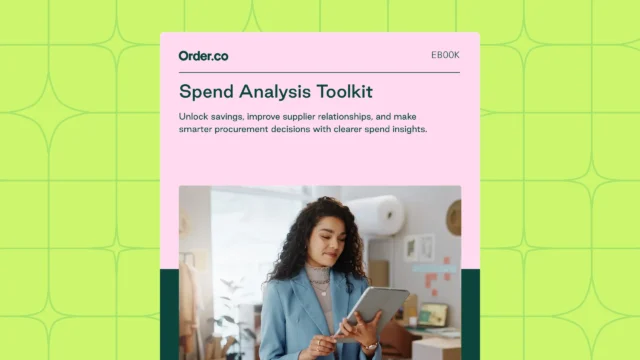What is Procurement Analytics? Using Data-Driven Insights to Cut Costs

What is Procurement Analytics? Using Data-Driven Insights to Cut Costs
Making smart procurement decisions isn't just about saving money. It's about keeping operations on track, avoiding costly supply disruptions, and using your budget wisely. But when you're managing vendors, expenses, and inventory across teams, it’s easy to miss the warning signs that result in unnecessary spending and delays.
Procurement analytics gives you the visibility you need to catch problems early, cut waste quickly, and make more strategic decisions that enable long-term growth. They help you go beyond basic spend reports by tracking the metrics that matter most. With support from the right tools, it's easy to understand what you're buying, how much you're spending, and where there's room to improve.
This guide covers everything you need to know about procurement analytics, including what they are, why they're crucial for maximizing purchase value, and how you can use them to create a more efficient, cost-effective procurement process.
Download the free guide: Spend Analysis Toolkit
What is procurement analytics?
Procurement analytics is the process of collecting and analyzing quantitative and qualitative data from internal and external sources to identify trends, support informed decision-making, and measure supply chain performance.
Put simply, procurement analytics transforms raw data into actionable insights.
For procurement teams, this means more time to focus on making strategic decisions, clearer visibility into spending to reduce costs, and greater ability to spot areas needing improvement.
Procurement analytics examples
You can analyze procurement data in many ways. Using the right mix of tools will help you create a complete view of past and ongoing spend performance that you can benchmark against market shifts and pricing trends.
Some common examples of procurement analytics tools and what they offer include:
- Spend performance dashboards: Interactive visualizations of company spend that help you analyze specific transactions, pinpoint rogue spending, and identify opportunities and risks
- Supplier scorecards: Reports that score supplier performance on key performance indicators (KPIs) like price variance, lead times, and defect rates
- Price fluctuation alerts: Automated notifications that inform you of price changes for raw materials and products
- Live reports: Dynamic reports that deliver real-time insights into procurement performance, spending patterns, and purchase order statuses
By leveraging these tools, you can identify cost-saving opportunities and make decisions that boost your bottom line.
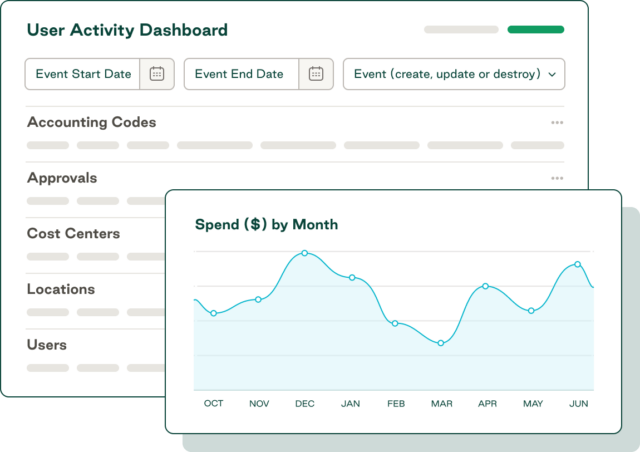
Benefits of procurement analytics
Procurement analysis benefits your entire organization. It supports other functions and aligns procurement with your core business goals.
According to Amazon’s 2025 State of Procurement Data report, 64% of decision-makers named “improving data and insights” as a top priority. This shows how essential procurement analytics is for staying competitive and efficient.
1. Optimize spend management
Procurement analytics combines spend data from various sources to give you a comprehensive view of your purchasing patterns. This clarity helps you identify overspending and make more informed choices that protect your financial health.
2. Analyze supplier performance
Automated tools collect and analyze supplier data, saving you time and allowing you to proactively address performance issues like late deliveries or quality concerns. With procurement analytics, you can replace subjective assessments with data-driven evaluations to get a crystal-clear view of vendor performance.
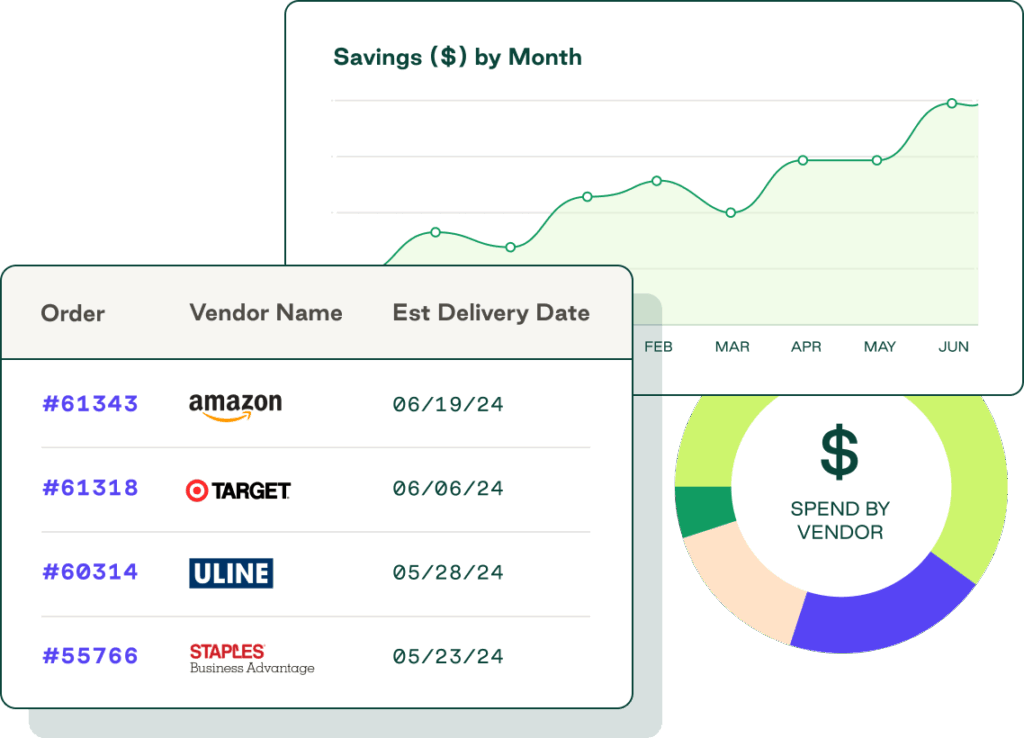
3. Mitigate supply chain risks
Predictive models assess potential supply disruptions—including geopolitical events and vendor bankruptcy—so you can prepare and respond effectively. Given the recent uptick in global supply chain disruptions (more than 76% of European businesses experienced disruptions that caused delays to their operations in 2024), this foresight is vital for managing the risk of uncontrollable events.
4. Identify cost-saving opportunities
Beyond the obvious cost savings gained from fast, automated workflows, procurement analytics provides greater visibility into spend performance. This helps you spot excess spending, purchases made outside established policies, and recurring spending patterns. With these insights, you can negotiate better contracts and prioritize top-performing suppliers.
5. Improve forecasting and decision-making
Advanced procurement analytics systems, such as Order.co’s AI-powered procurement software, use historical data and AI-driven tools to enhance forecasting, analyze trends, and improve demand planning. This enables better inventory management, reducing stockouts and excess carrying costs while balancing risk and efficiency.
Different types of procurement data analysis
Procurement analytics includes several models that each play a distinct role in improving your procurement strategy. These approaches help you understand past performance, uncover root causes, anticipate future trends, and choose the best path forward.
The four main types of procurement data analytics are:
- Descriptive analytics: Uses historical data to identify patterns and visualize past performance to answer the question: What happened?
- Diagnostic analytics: Examines historical outcomes to uncover their reasons and answer the question: Why did it happen?
- Predictive analytics: Applies statistical models and machine learning to forecast future events based on data and answer the question: What is likely to happen?
- Prescriptive analytics: Recommends the most effective actions by analyzing forecasted outcomes to answer the question: What should we do next?
Examples of tools for each type:
| Descriptive | Diagnostic | Predictive | Prescriptive |
| - Spend performance reports - Supplier scorecards - Contract compliance summaries | - Price variance analysis - Late delivery root cause analysis - Maverick spend driver analysis | - Demand forecasting - Commodity price forecasting - Supplier risk prediction | - Dynamic sourcing recommendations - Predictive reordering - Optimal hedging strategy |
Why predictive and prescriptive analytics outperform traditional models
Traditional procurement analytics focuses on descriptive data analysis. This method can show what happened but leaves you guessing how future sales, supplier risk, and pricing will pan out.
Modern procurement analytics tools provide the data you need to make smarter, more objective decisions. They can even break down the next steps you should take to capitalize on new opportunities.
As Jason Walker, VP of General Manufacturing Practice Lead, says, “By shifting from inspection to predictions, quality management systems can use AI and ML to identify necessary process adjustments, support root cause analysis, and even alert supply chain partners to potential risks.”
With the right tools, you can stay one step ahead, acting on insights that support your goals rather than issues that have already occurred.
Collecting data in procurement
Before powerful machine-learning algorithms and real-time performance tracking, procurement teams were forced to make decisions based on historical data and gut feel.
But today’s procurement process is different. Modern tools can handle large amounts of data from a wide range of sources, integrating and enriching information into a single system to help you accurately forecast future needs.
External procurement data can help you forecast costs, manage risk, and plan ahead:
- The latest market trends, commodity pricing, and labor rates are useful for predicting procurement costs.
- Supplier risk and financial data services can provide credit ratings and environmental, social, and governance (ESG) scores to assess supplier stability.
- Geopolitical and environmental data around weather events, new trade regulations, and global disruptions can help you plan for sudden shifts in supply and demand.
Internal data often lives in ERPs, procure-to-pay software, and contract lifecycle management (CLM) tools—and fewer than 70% of CPOs have a single location to store company spend data. Procurement teams that leverage integrated analytics tools as a central data hub are better equipped to manage spend, anticipate demand, and monitor supplier performance.
Common procurement analytics use cases in business
Spend analytics is useful in every stage of your procurement lifecycle. From improving contract compliance to diversifying your supplier base, analytics helps you find the most effective strategy to balance cost, speed, accuracy, and supply chain resilience.
Here’s a quick rundown of five common use cases for procurement analytics.
Spend management
Manual spend analysis is time-consuming and often leads to errors. Procurement analytics tools give you a clear understanding of where your money is going, what you're buying, and how much value you’re getting.
With Order.co’s procurement analytics, you can set rules to flag duplicate purchases of the same item from different suppliers. By simply reviewing the data and adjusting your purchasing behavior, you can consolidate vendors and reduce costs.
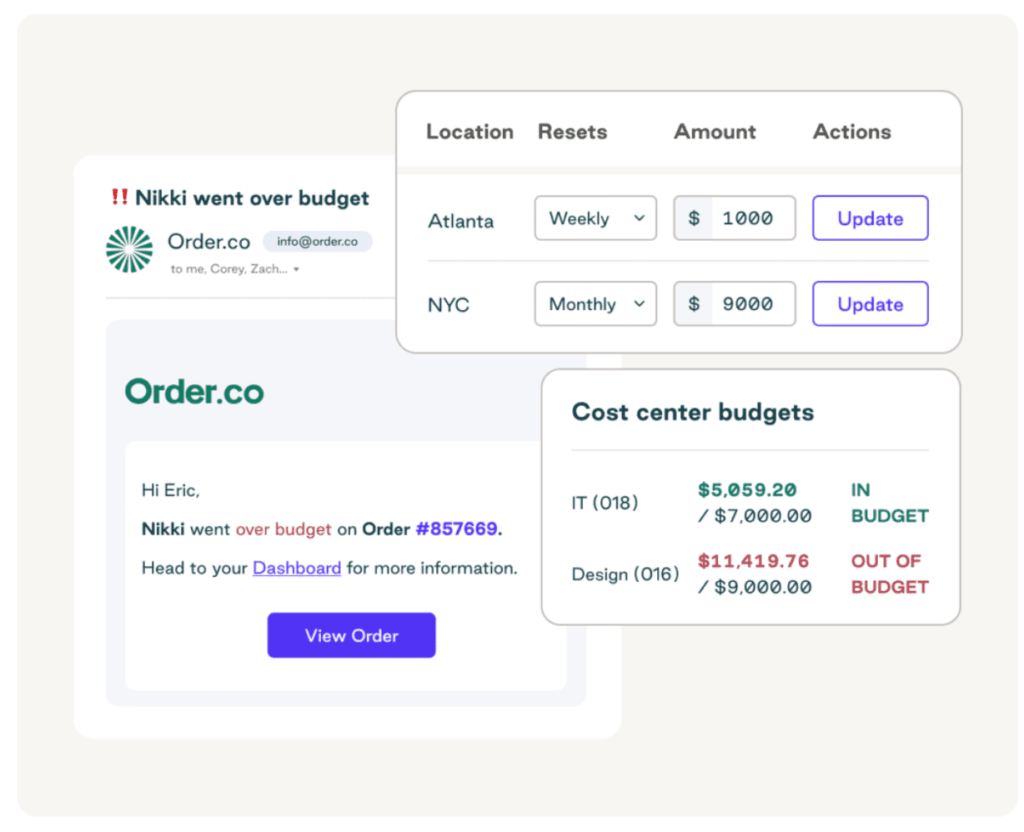
Category management
Procurement analytics transforms category management into a data-driven strategy instead of a manual process based on intuition. By integrating your local spend data—such as supplier performance metrics and company spend—with an in-depth analysis of the market, price trends, and cost drivers, you can see how each category is performing. This makes it easier to segment suppliers based on profit and supply risk.
Aaron McMillan, Editor of Procurement Magazine, says, “Advanced analytics now provides category managers with deeper insights into spending patterns, supplier performance, and risk factors.”
Contract compliance
When buying activities don’t adhere to contract terms and conditions, you risk losing value from your purchases. But without a reliable system for measuring contract compliance, it’s difficult to spot these deviations.
Procurement analytics lets you audit purchases and uncover discrepancies to ensure contract compliance. The right platform can automatically compare every line item in invoices and purchase orders to contracts, identifying issues in real time. This turns tedious and error-prone manual audits into highly accurate automated checks.
Maverick spend analysis
Whether it’s failing to create purchase orders, buying from the wrong suppliers, or using personal credit cards for company purchases, maverick spend can slip through the cracks and snowball into unjustifiable losses.
Analytics tools not only help you identify these unapproved purchases but also provide a system for calculating their financial impact, risks, and root cause. Is the official process too slow? Are essential products missing from available catalogs?
With procurement analytics software, you can automatically scan and classify spend data, forecast financial impact, and identify patterns to fix problems before they occur.
Strategic sourcing
Strategic sourcing ensures you’re getting the best value from your chosen suppliers. It’s more than simply identifying the cheapest prices—it’s balancing cost with quality, risk, and service for every purchase made.
Procurement analytics uses AI and machine learning to scan your entire spend history and highlight underperforming suppliers. Instead of manually comparing prices on a complicated spreadsheet, analytics tools help you model sourcing scenarios based on your goals. You can also use these insights to negotiate better contracts, benchmark vendor performance, and build stronger supplier relationships.
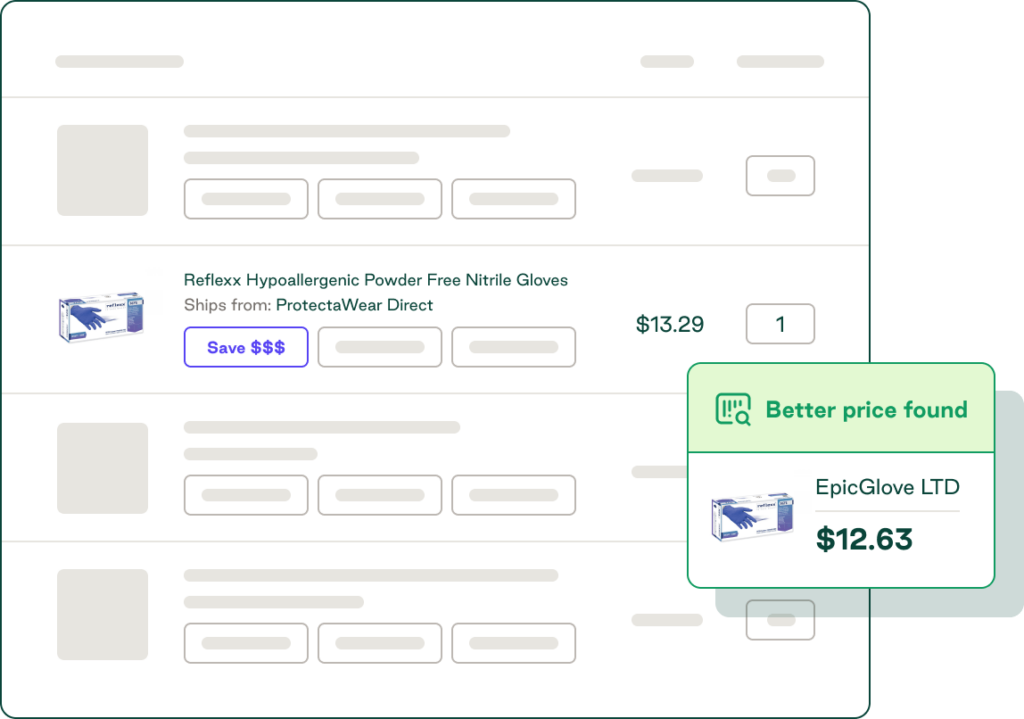
Drive more value from your purchases with procurement analytics software
Traditional procurement analytics is time-consuming and often lacks the valuable insights you need to work efficiently. Manually analyzing all your spend and supplier data can lead to errors, missed opportunities, and inaccurate forecasting.
Order.co helps you boost spend visibility and make better decisions by allowing you to:
- Run detailed spend reports that uncover savings opportunities and reduce supplier risk
- Monitor up-to-date spend data to improve financial efficiency
- Cut procurement costs by setting tighter controls that eliminate maverick spending
- Compare large amounts of vendor info in seconds to find the best pricing for all your products
- Track and manage all your purchasing, sourcing, and invoicing activities in one place
Order.co’s AI-powered analytics features and machine-learning algorithms save you time, money, and effort by unlocking complete visibility into your spending patterns. Schedule your personalized demo to see how it works for yourself.
Get started
Schedule a demo to see how Order.co can simplify buying for your business
"*" indicates required fields
